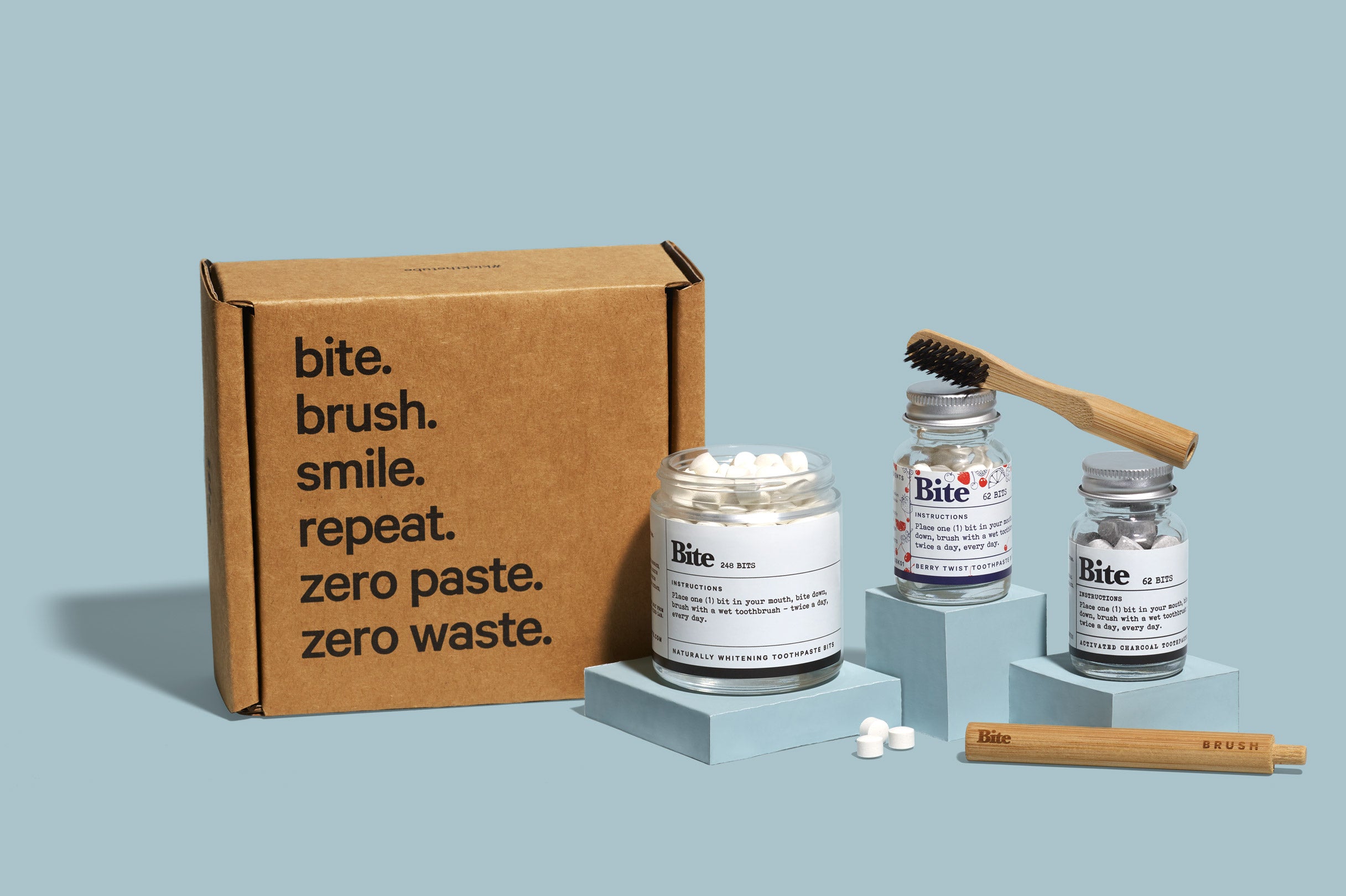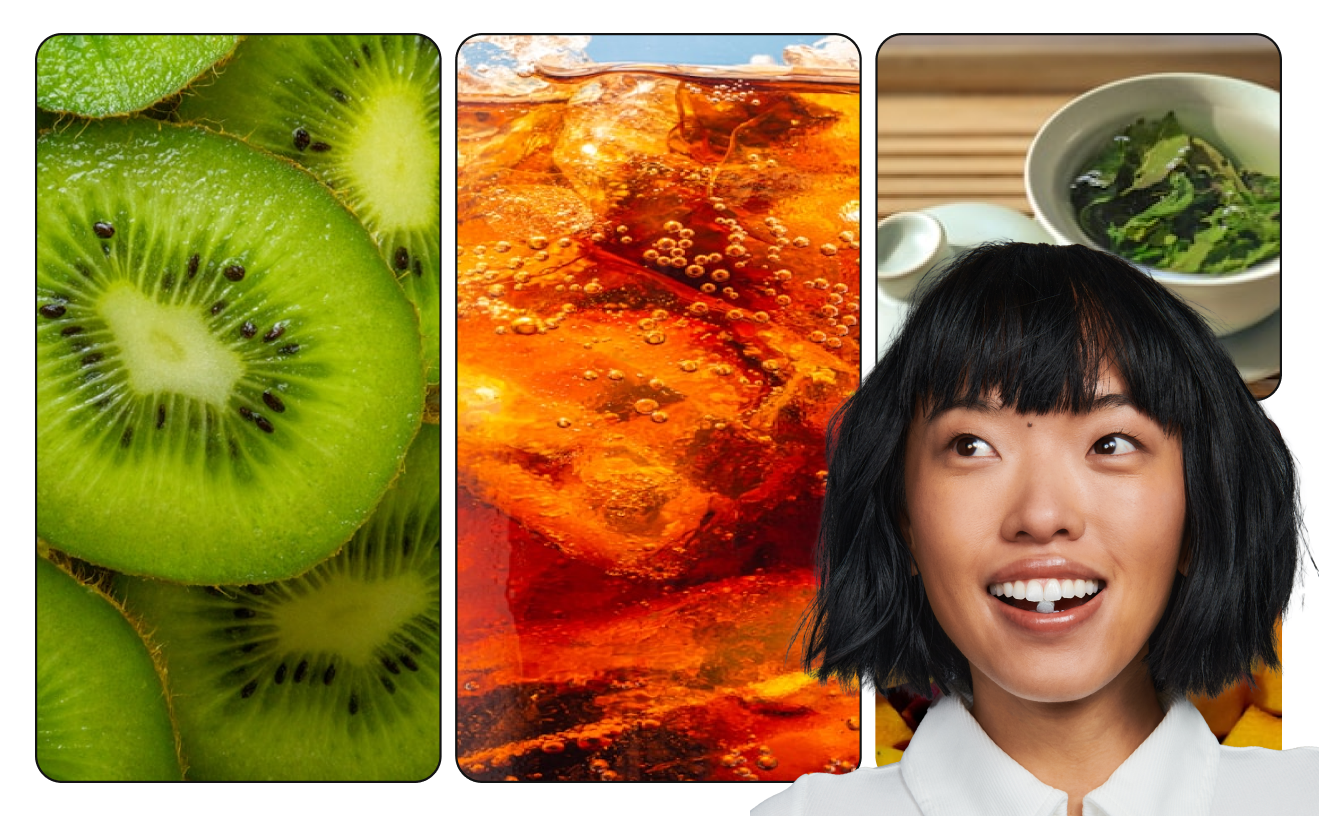Why We Use Compostable Packing Materials
Here at Bite, we know how crucial it is to use biodegradable, compostable, and recyclable materials for the good of our planet. The immense amounts of trash in our landfills is not something that we could ethically contribute to.
Every year approximately 114.5 million metric tons of carbon dioxide equivalent of methane are released into the atmosphere due to landfills alone. The use of compostable packing materials not only prevents extra waste from ending up in a landfill, but the act of composting will also help those resources eventually become soil that can grow new plants.
What Is Compostable Packing?
Essentially, compostable packing is any packaging materials used to ship products to consumers that can be composted after use. Next, the question becomes: “what exactly is composting?”
Composting is what occurs when certain kinds of materials are recycled. When these natural resources are recycled, they eventually turn into rich soil that works as an excellent fertilizer for new plants.
Not all composting is created equal, however, as there are a few different kinds:
- Aerobic Composting: Aerobic composting is all about the importance of air and how it can be used and harnessed to speed up the decomposition process. This kind of composter is common in backyards, as it works best in a medium-sized bin that is turned a few times a week.
By spinning the composter every few days, air enters the composter, and the breaking down can begin. It’s important to add certain materials to maintain a specific concentrate of nitrogen, as that can impact the quality of the resulting compost. As the matter inside the composter starts to decompose, it will get hotter. This means it’s working! -
Anaerobic Composting: Where aerobic composting requires occasional tending, anaerobic composting is largely characterized by leaving it completely alone for long periods of time. It is essentially the opposite of aerobic composting, so it should avoid contact with air.
This means that these compost piles are largely underground or in places with little to no airflow. Without the air to help the organic materials break down, the result is often not the best smelling thing in the world. Because of this, anaerobic composting is better performed outside and likely far away from anyone with a nose.
-
Vermicomposting: Vermicomposting lives up to the “vermi” part of its name because worms are the biggest contributors to the decomposition process. With the help of bacteria, these worms are very effective composters.
Many different food scraps can be tossed into a vermicomposter, but they prefer natural foods that don’t contain much acid. There are specific kinds of compost worms that can be ordered and will help get your vermicompost off to an excellent start.
Composting is just a faster version of a process that would occur no matter what if given long enough. All-natural materials decompose over time, but the process of composting (whatever the method) provides the ideal environment for the matter to decompose quickly and effectively.
Biodegradable vs. Compostable Packaging
Biodegradable and compostable packaging are both leaps and bounds better than using materials that will end up in a landfill, but what exactly are they? For starters, everything that is compostable is biodegradable, but not necessarily everything biodegradable is compostable. This is because “biodegradable” is a slightly more vague term, whereas “compostable” hones in on the specifics of what the materials turn into and how.
In order to be biodegradable, something has to be capable of being consumed by microorganisms. These microorganisms work to break down the former materials into naturally occurring compounds.
For something to be compostable, it must be small enough for microorganisms to consume, but what is left behind has to disintegrate into non-toxic and natural compounds. Where biodegradable materials only need microorganisms to break down, compostable materials need a cultivated mixture of microorganisms, humidity, and heat to create nutrient-rich soil.
Biodegradable compounds take an ambiguous and undefined amount of time to break down, but compostable compounds break down in a defined time period. Biodegrading an item could potentially leave small traces of plastic in its wake known as microplastics. Though these microplastics are small, they can still be harmful to the ocean and marine life. Meanwhile, composting leaves no plastics or chemicals behind at all.
So both a biodegradable and a compostable package are good for the environment as opposed to shipping methods that can do neither, but composting is a more labor-intensive and more thorough way of breaking down materials.
Recyclable vs. Landfill-Bound Packaging
Packaging crafted out of paper or paper products is generally recyclable, making cardboard boxes a preferred shipping method. Meanwhile, many shipping containers that have plastic will end up in a landfill. The harm does not only occur after the plastic products are done being used, though.
The creation of plastic requires wasting a great deal of unnecessary resources. Oil, gas, and coal are all integral to the process of creating plastic, which in turn releases tremendous carbon dioxide emissions. Basically, plastic generates a massive carbon footprint that causes a devastating climate impact at the beginning and end of its life. But what about the middle?
Transporting these items in plastic shipping containers wastes huge amounts of energy. From cargo ships to freight trains to air travel and more, there isn’t a single stage of plastic’s life cycle where it doesn’t harm the environment and add to climate change in one way or another.
Become More Efficient
As we mentioned, the transportation and shipping process can take up a lot of resources. The way to avoid or improve this is by making the process more efficient, meaning that not as much travel needs to occur, natural resources can be preserved, and a company’s carbon footprint can be minimized.
Bite has found a solution that works for us, our customers, and the planet. It involves consolidating our shipping process so that no extra fuel needs to be wasted. Today’s blog will go more in-depth on that particularly subject a bit later on.
Look for Eco-Friendly Alternatives
When looking at how we currently do things, it becomes readily apparent that there are improvements that can be made. If air travel contributes significantly to our carbon footprint, look into methods of transportation that don’t involve planes. If a plane is an absolute necessity, consolidate as many items per flight as possible to prevent extra flights.
Being eco-friendly means reducing our carbon footprint as much as we can. Once that’s done, if there is still some carbon usage that we can’t avoid, it’s time to look into carbon offsets. By contributing to select carbon offsets, a company can make major steps toward carbon-neutral shipping and perhaps becoming a carbon-neutral company.
Consider Every Step of Your Supply Chain
The use of environmentally conscious packaging is crucial to a company being low-waste, zero-waste, or sustainable in any fashion. Still, it’s far from the only important aspect of how a business operates.
The truth is, every step of a company’s supply chain creates waste and greenhouse gas emissions. That might be a scary thought, but the good news is that it means every step of a supply chain has sizable room for positive change!
A company must assess all of its processes, from production to delivery, and determine where excess resources are used. Are unnecessary materials being wasted when manufacturing a product? If so, how can we combat that to save money and, more importantly, not harm the environment by mindlessly wasting something perfectly good? How do we ship our product, and is unnecessary air travel greatly contributing to our carbon footprint?
If a company goes through retail, a lot of land is used for storage facilities. Also, many resources are used in getting products to and from brick-and-mortar stores. Then, the customer still has to drive to and from the store, emitting greenhouse gases and wasting fuel. In this case, considering a direct-to-consumer platform may benefit all involved parties.
How Do Compostable Packing Materials Help?
In short, compostable packing materials help immensely in terms of not creating waste that will inevitably end up in a landfill or the ocean.
Composting is a natural method of breaking down materials that benefit us in a few ways: the materials will never pollute the environment. By the materials being composted, they can actually help new plants grow. Many communities have shared compost piles that are always happy to receive contributions even without a yard space or garden.
Envelopes
Plastic poly-mailers are unfortunately the norm for many packages of this size. Still, the nature of single-use plastic is that it will wind up harming our already fragile ecosystem. We knew there had to be a better way, so we instead use kraft envelopes.
Then comes the issue of keeping orders safe and preventing them from jostling around in the package. Where other companies turn to bubble wrap and other non-sustainable options, we fill the envelope with a buffer of post-consumer recycled newspapers. The entire package is completely plastic-free, compostable, and recyclable.
Boxes
We kept noticing companies shipping huge boxes with only tiny bits of product inside, and it was such a waste. That’s why Bite makes sure that our packaging is the correct size for your order. Like our envelopes (and our whole company), our boxes are 100% plastic-free. They’re made of corrugated cardboard and then sealed shut with paper tape for maximum protection. These boxes are fully recyclable, tape included.
Refills
The first shipment of Toothpaste Bits or Mouthwash Bits comes in a minimalist glass bottle. We encourage you to use and reuse these bottles for a variety of purposes. One of those purposes might as well be when your bits refill comes in the mail. When you’re finally done with the glass container and all of the fun DIY projects you can do with it (googly eyes, anyone?)It's recyclable.
Bite’s bottles and jars are made of a beautifully minimalist and environmentally conscious glass, but while glass is recyclable, it’s important to note that it cannot be composted.
Is Bite’s Shipping Eco-Friendly?
Bite is committed to being sustainable from production to delivery, so our shipping methods are absolutely eco-friendly. We go about making shipping eco-friendly in two main ways.
First, we use pre-existing shipping routes so that postal carriers don’t have to go out of their way to deliver our items. By using these existing routes, we don’t add any extra greenhouse gas emissions caused by the burning of fuel. Don’t worry though, because our packages are always delivered in a timely and efficient manner.
The unnecessarily rapid pace of shipping nowadays releases tremendous amounts of carbon dioxide emissions into the atmosphere. With the quick turn-around time, a lot more travel is required, leading to even more waste. Instead, we like to think of our shipping process as a public transit-like system.
The second way we ensure that we get our products to you in an eco-friendly way is with our direct-to-consumer platform. Being DTC means that we always deliver our products right to your door for maximum convenience, but there are other factors that contribute to our decision.
By bypassing brick-and-mortar stores, we minimize the amount of product we need in stock at any given time and reduce the warehouse space we need. This cuts down on carbon emissions related to travel and leaves more land to be used for other purposes.
Signed, Sealed, Delivered
Bite has pledged to never harm the environment, and our practices always reflect that promise. Every part of our supply chain is optimized to make us the zero-waste organization that we are proud to be today.
By minimizing and offsetting our carbon emissions, we are also totally carbon neutral. By making many positive changes, including adopting more reliable shipping methods, a healthier future is signed, sealed, and delivered.
Sources:
Frequent Questions About Landfill Gas | EPA
Composting 101 | Natural Resources Defense Council
Biodegradable vs. Compostable: What Is the Difference? | Good Start Packaging
Amazon’s 1-Day Shipping Is Convenient — And Terrible for the Environment | Vox


